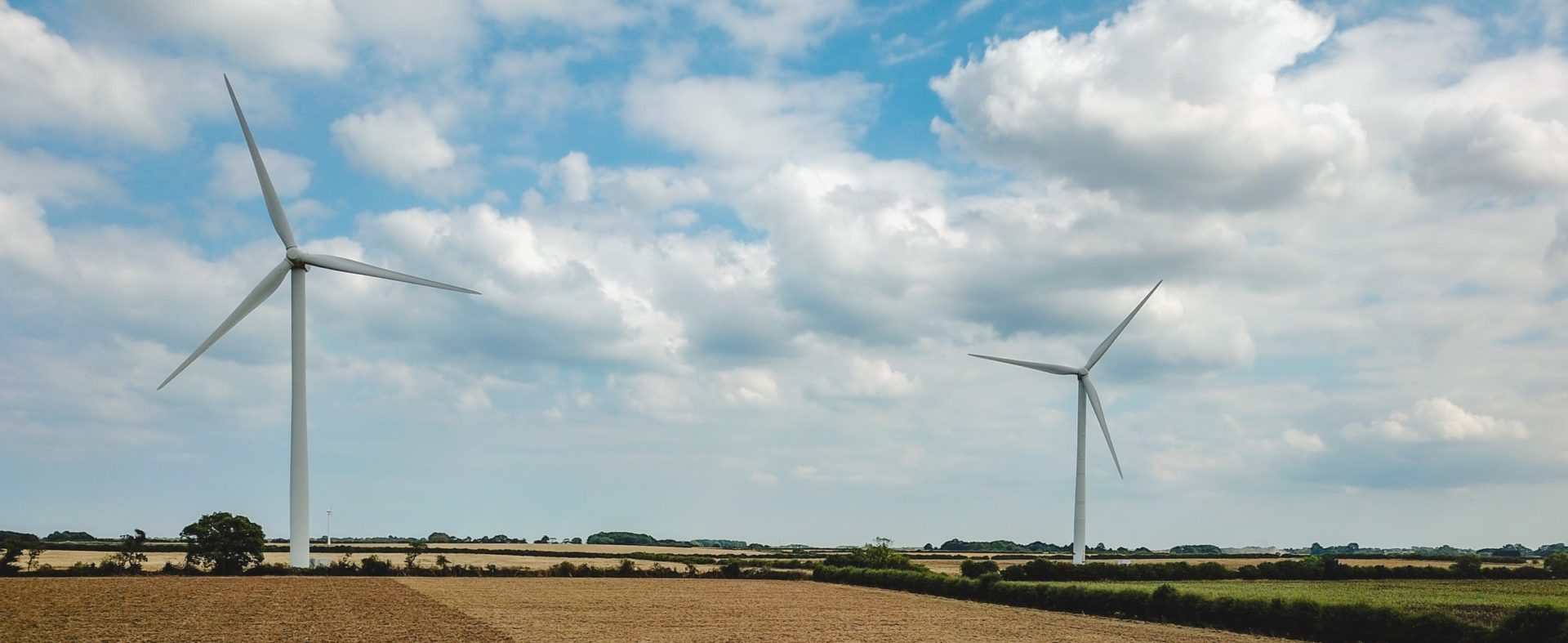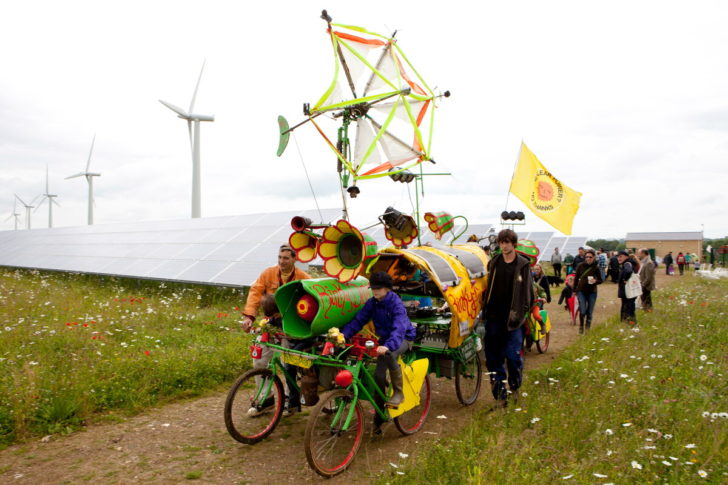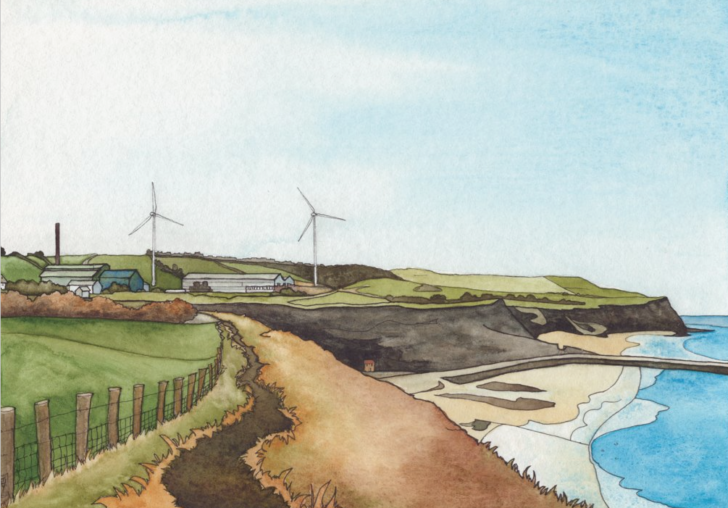Community Energy Visioning – showcasing renewables done well

At CPRE, we know that the climate emergency is the biggest threat to the countryside. Whether through the flooding of prime agricultural land, or the disappearance of cherished wildlife and landscapes, we need to urgently reduce our carbon emissions to avoid the devastation of rural life.
Low carbon countryside
We want to ensure that the transition to a low carbon future is fair for those living in the countryside. Renewables still accounts for just around half of UK electricity, so we know that a low carbon energy future will mean that we need to have a lot more wind turbines, solar panels, and hydro schemes across the country. What’s more, many of these schemes will be sited in rural areas – after all it’s where the space is.
Unfortunately, the main approach we currently have for establishing rural renewable energy schemes in this country is badly wrong. Too often developers come to rural communities with a plan that suits their priorities in terms of location, design and profitability. This leaves people living in the local area suddenly faced with a proposal they have little chance of genuinely influencing. Inevitably this leads to conflict, local opposition to renewable energy schemes, and in the long run, fewer renewable energy schemes actually going ahead.
CPRE’s vision
For the past year, CPRE has been developing an alternative approach to planning renewable energy in the countryside. This approach recognises the importance of the local landscape context, gives a voice to the priorities of rural residents, and empowers communities to pro-actively prepare for a future with more renewable energy. We call it Community Energy Visioning.

CPRE’s process for creating a ‘Community Energy Vision’ involves running a series of three workshops. During these workshops, residents in a local community share their opinions on what renewable energy could go where in their local landscape, and under what conditions. The workshops are designed for anyone to take part in and we always try to ensure that as wide a sample as possible from the local community takes part (offering cake helps!)
The visioning process
The first workshop focuses on a discussion with local residents about their attachment to the local landscape, which areas and features are particularly important to them and why. The second workshop is all about the energy needs of the local community. We model this using a tool called CESAR, developed by the Centre for Sustainable Energy). We also explore which types of renewable energy local people might be willing to accept in their surrounding countryside. By the end of the second workshop, the aim is to have a list of potential renewable energy options with ballpark figures for how much could fit in the local landscape – all at a suitable local scale. For example: two small wind turbines and ten acres of solar panels might be proposed. Finally, in the third workshop, we use a large map of the local area to help residents come up with a vision of where their preferred renewable energy options could be sited.
After the workshops are complete, we write up the results into a vision document and work with local artists to produce illustrations. These depict the future of the local landscape with the renewable energy schemes proposed. This report forms the basis of the ‘Community Energy Vision’. Local residents are then equipped to work together along with their local CPRE group to make the vision a reality. They can do this in different ways, for example by taking it to their local council, talking to renewable energy developers, or even setting up their own community energy scheme.
Key findings
Thanks to generous funding from the MCS Charitable Foundation, we were able to carry out a number of pilot Community Energy Visioning projects with CPRE North and East Yorkshire in 2021. To learn more about how to best run the process, we carried out three workshops. The first was in Loftus on the Cleveland coast; then Thornton-le-Dale in the North York Moors National Park, and finally Stillingfleet in the Vale of York. Across these three different locations, we learnt a huge amount about creating a plan for renewables done well in the countryside. Here are some of these learnings:
- Rural communities are deeply attached to their local landscapes. Their local countryside is a central part to their lives and one of the most important elements of their work, identity and wellbeing.
- Rural communities want to be part of the solution to the climate emergency. If you empower them to have their say and find solutions that work for them, they will put forward surprising suggestions.
- Renewables done well and a just transition for rural communities means that there can be no one size fits all approach to this issue. Each community has different opportunities depending on the assets in their area.
- Residents can identify opportunities for well-sited, appropriately-scaled, ground-mounted solar energy schemes, with biodiversity enhancing screening, even in areas with a strong agricultural focus.
- Even small rural parishes are able to find enough suitable sites in their local area to generate the renewable energy they need to meet local domestic demand. The real challenge comes with industry and the growth of demand into the future.
- By using the Community Energy Visioning process to put the views of rural communities at the heart of the debate around renewable energy, local CPRE’s can highlight solutions to protect landscapes and avert climate catastrophe.

Further resources
Using everything we learnt during the pilot projects in North Yorkshire we have now developed a toolkit for running a Community Energy Vision in any rural community across the country. Over the course of 2022 several other local CPRE groups have used this toolkit to run the workshops in their local area, including Rutland, Derbyshire, Suffolk, and South Yorkshire, building an ever-growing picture of how a community first approach could protect the countryside and help us develop the renewable energy we need faster and better than the developer led system we have been stuck with for too long.
You can read the Community Energy Visions from our pilot projects in North Yorkshire:
Our toolkit is now available for local CPRE groups to use right across the country and if you would be interested in seeing the workshops run in your local area, why not find your local group and get in touch with them today?



